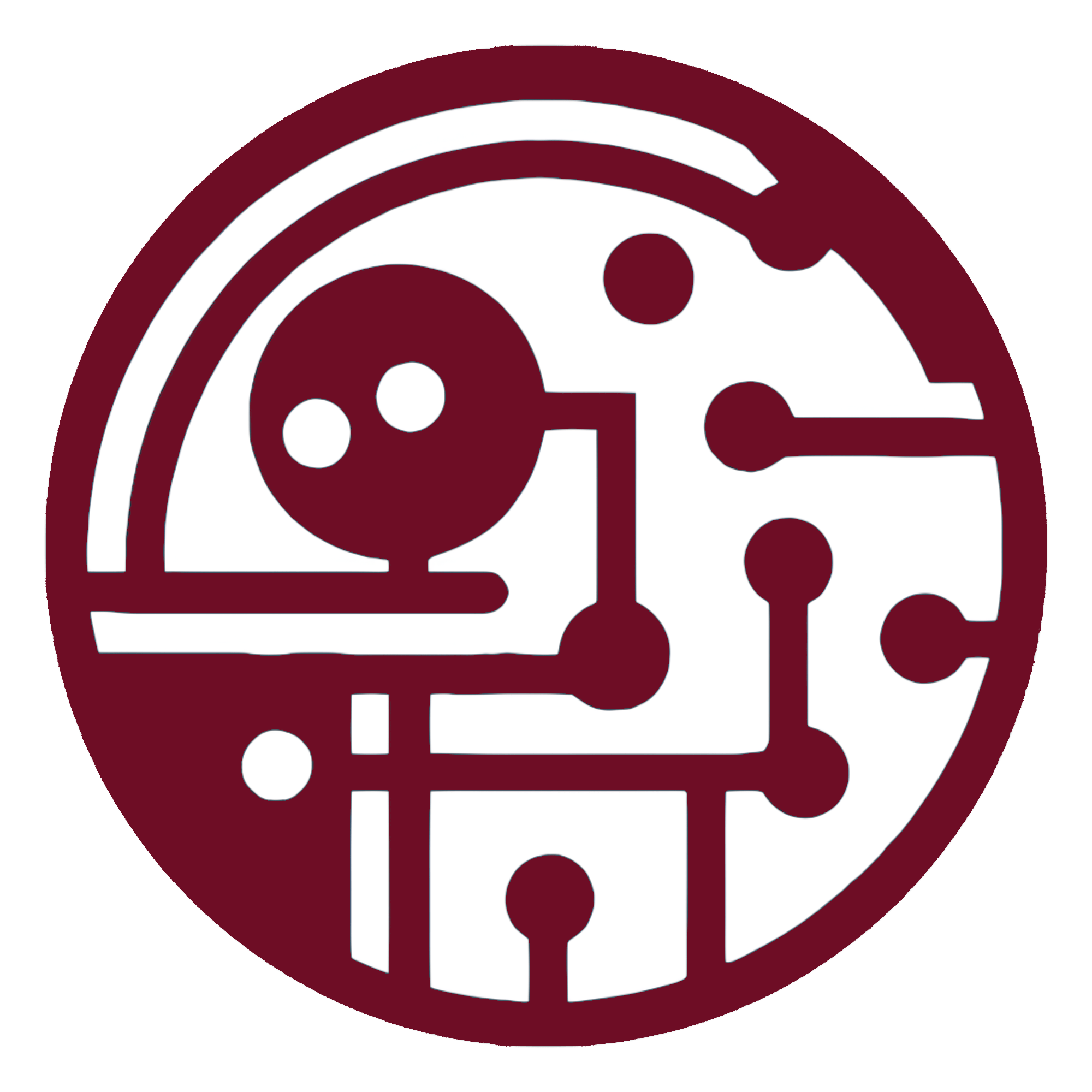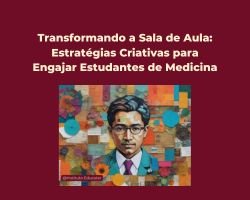Transforming the Classroom: Creative Strategies for Engaging Medical Students
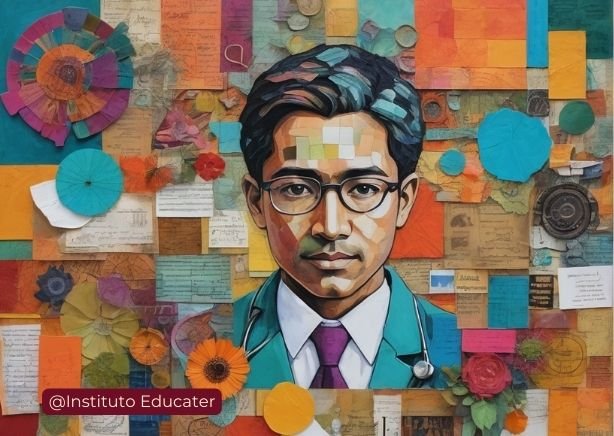
In the context of medical training, pedagogical innovation is not just an option; It is a necessity to adapt teaching to rapid developments in medicine and technology. This article explores creative strategies to revitalize the learning process and effectively engage medical students. Through an integrated approach and practical examples, we seek to offer ideas for educators who want to transform their classrooms into dynamic and stimulating environments.
In the current panorama of medical education, the need to adapt teaching methods to rapid technological changes and developments in the healthcare field is more pressing than ever. With the aim of preparing medical students not only to pass exams, but to become competent and innovative doctors, the use of creative strategies in the classroom has gained prominence. This section discusses several techniques that can be implemented to enrich the educational process.
One of the most impactful techniques is gamification, which uses game elements in educational contexts, encouraging active student participation through competition and reward mechanics. Studies show that gamification not only increases student engagement but also improves retention of essential information and clinical skills.
Another relevant approach is the use of structured debates, which promotes critical thinking and argumentation skills. In a field as dynamic as medicine, being able to defend points of view based on scientific evidence is decisive. Debates also prepare students for professional interactions where medical decisions may be discussed or challenged.
the implementation of multidisciplinary case studies is another effective strategy. By analyzing cases involving various medical specialties, students develop a holistic view of medicine, understanding how different specializations contribute to comprehensive patient care. This practice encourages collaboration and effective communication between different areas of healthcare.
Furthermore, the introduction of practical workshops which simulate real situations in clinical environments, such as the management of medical emergencies, prepares students in a practical and direct way for the challenges they will encounter in their careers. These workshops help ease the anxiety of first contact with real patients by providing a solid foundation of practical experience.
Technology also plays a fundamental role in this transformation. The integration of augmented reality (AR) in anatomy courses, for example, it allows students to see anatomical structures in three dimensions, facilitating the understanding and memorization of complex information. AR can be used to simulate surgical procedures, offering a safe and interactive way to learn surgical techniques before practicing them in a real clinical environment.
To ensure the effectiveness of these strategies, it is essential that educators receive adequate training to integrate new technologies and pedagogical methods into their daily practices. The continuous professional development of teachers directly reflects the quality of teaching and the ability of students to apply the knowledge acquired effectively.
Finally, the engagement of medical students through creative strategies is a fundamental piece in the training of qualified professionals ready to face the challenges of modern medicine. Continuing to explore and implement these techniques is essential to the evolution of medical education.
Moving forward, the next step in our discussion will address how the use of Artificial Intelligence it can be integrated into pedagogical practices, continuing the transformation of the learning environment in medicine. This approach promises not only to facilitate the personalization of teaching, but also to raise the quality of medical training to the next level.
Take medical education a step forward with our new article, "Transforming the Classroom: Creative Strategies for Engaging Medical Students." We present innovative methods such as project-based learning, clinical simulations and the use of advanced technologies, all designed to prepare future doctors for the challenges of the profession. Review pedagogical strategies that not only teach, but also transform.
See how together we can elevate medical education to new levels of excellence and effectiveness. Join us in this transformation and be part of the change!
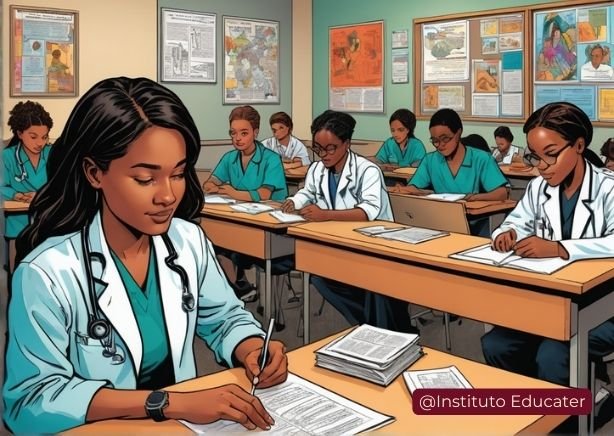
Project-Based Learning (PjBL)
Project-Based Learning (PjBL) represents a teaching methodology that places students at the center of the educational process, allowing them to acquire knowledge and skills through in-depth investigations into complex challenges and issues. This method is particularly effective in medical education as it simulates the multidisciplinary and dynamic environment in which healthcare professionals operate.
In PjBL, students are encouraged to explore real or hypothetical medical problems, developing projects that require an integration of theoretical and practical knowledge. This approach not only fosters autonomy and responsibility, but also reinforces the importance of continuous and self-directed learning, essential in medical practice. For example, a project might involve developing an intervention plan for a disease outbreak in a fictional community, requiring students to have skills in epidemiology, public health management, and effective communication.
Advantages of Project-Based Learning:
To effectively implement PjBL, medical education institutions must provide adequate resources, such as access to up-to-date scientific literature, technological tools, and opportunities for partnerships with the healthcare system. Furthermore, the role of the educator evolves from a transmitter of knowledge to a facilitator of learning, guiding and supporting students on their paths of discovery.
Integrating Project-Based Learning into medical education is a powerful strategy for preparing students to face the real challenges of medicine. By equipping future doctors with an education that is as practical as it is theoretical, PjBL not only enriches their academic training but also better prepares them for the complexities and demands of modern medical practice.

Clinical Simulations
The use of clinical simulations in medical education provides students with a valuable opportunity to practice skills in a controlled and safe environment. These simulations can range from basic procedures to complex medical emergencies, allowing students to apply theory to practice without risk to real patients. The introduction of technologies such as simulated patients, virtual reality and high-fidelity mannequins can enrich these experiences, making them more interactive and realistic.
Clinical simulations emerge as important components in the training of medical students, providing a realistic scenario where they can apply theoretical knowledge in a controlled and safe environment. This methodology allows students to face a variety of clinical situations without the risk of harming real patients, a significant advantage in modern medical education.
These simulations are often performed using high-fidelity mannequins that mimic physiological responses human resources to medical interventions. Such devices offer instant feedback on student actions, allowing for in-depth learning about the correct execution of medical procedures and responding to complex emergencies.
In addition to mannequins, the virtual reality (VR) has been increasingly integrated into clinical simulations. Through VR, students can immerse themselves in extremely realistic medical scenarios, from heart surgery to managing an emergency room during a peak demand, all without leaving the classroom.
A augmented reality (AR), in turn, complements VR by superimposing digital information on the real world, enriching the simulation with visual details and data during training. This technology allows, for example, students to visualize the circulatory system on a physical mannequin, facilitating the understanding of complex concepts.
Clinical simulations also benefit from artificial intelligence (AI), which can adapt scenarios in real time to challenge students with unexpected complications, mimicking the unpredictability of the real clinical environment. This application not only tests students' responsiveness but also enhances their critical decision-making skills under pressure.
It is essential, however, that educators are adequately prepared to use these technologies. Continuous training and refresher programs are essential to ensure that instructors can maximize the potential of simulation tools, offering students a rich and comprehensive educational experience.
Thus, the effective implementation of clinical simulations in the medical curriculum not only raises the level of preparedness of future physicians, but also ensures that they can enter the clinical field with significantly greater experience and more practical competence. This teaching method offers one of the closest trainings to clinical reality, preparing students for exceptional performance in their future medical careers.
In the next section, we will explore how technology can be further integrated into the medical classroom, specifically through the use of e-learning platforms. These tools not only complement clinical simulations, but also offer flexibility and accessibility to learning, adapting to the individual needs of each student.
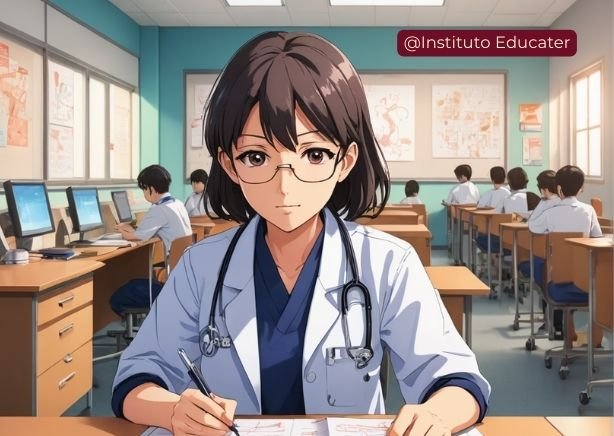
Technology in the Classroom
The role of technology in medical education continues to grow, with digital tools that facilitate everything from knowledge management to remote collaboration. E-learning platforms, educational mobile apps, and simulation software are just a few examples of how technology can be employed to engage medical students. These tools enable more flexible and accessible learning, adapting to students' individual needs and complementing their in-person learning experiences.
A importance of technology in medical education is indisputable, transforming the way knowledge is transmitted and absorbed. With the continued advancement of digital tools, educators are able to offer a more dynamic and interactive learning experience, essential to meet the demands of modern medicine.
E-learning platforms represent one of the pillars of this transformation. They allow educational content to be accessed from anywhere and at any time, providing great flexibility that adapts to the pace of each student. This is particularly beneficial in a field as demanding as medicine, where a balance between personal and academic life is important.
Educational mobile applications are also essential in this technological ecosystem. They offer resources such as interactive quizzes, explanatory videos and discussion forums, which facilitate ongoing study and review of important concepts outside of the formal teaching environment.
Furthermore, the advanced simulation software allow students to practice medical procedures in a safe environment, without risk to real patients. This practice not only deepens technical understanding, but also prepares students emotionally for the challenges of the real clinical environment.
Technology also facilitates the personalization of teaching. Adaptive systems can analyze student learning progress and adjust teaching content to specifically address areas that require the most attention. This ensures that all students can advance according to their own development, maximizing learning efficiency.
Remote collaboration is another aspect where technology plays an important role. Collaborative platforms allow students and teachers to interact in real time, regardless of their geographic locations. This not only breaks down physical barriers, but also promotes greater integration of diverse knowledge and experiences, enriching medical training.
To ensure the effectiveness of these technological tools, it is essential that educational institutions invest in robust infrastructure and continuous training for teachers and students. This includes not only training in the efficient use of technologies, but also the adaptation of pedagogical methodologies to fully integrate these resources into the educational process.
In short, the adoption of technology in medical classrooms is not just a trend, but a necessity to train qualified professionals ready to meet the demands of the future of healthcare. By using these tools, institutions can ensure high-quality education that is at the same time flexible, accessible and comprehensive.
Below, we will explore how artificial intelligence is being implemented in medical classrooms to further personalize the learning experience, adapting to individual students' needs and offering ideas for continuous improvements in the educational process.
Using Artificial Intelligence in the Classroom
The insertion of the Artificial Intelligence (AI) in the medical educational environment is revolutionizing teaching and learning methodologies, offering sophisticated tools that can personalize and enrich students' educational experience. This section explores how AI can be used to improve medical education by adapting to individual student needs and providing more efficient and targeted learning.
A AI can transform medical education in a number of meaningful ways, from personalizing curricula to simulating complex clinical scenarios. Below are some of the most promising uses of AI in the educational context:
Despite the benefits, implementing AI in medical education comes with significant challenges, including data privacy issues, the need for adequate technological infrastructure, and ensuring that the technology does not replace the necessary human element in medical education. Furthermore, it is essential to consider the ethical implications of using student data and ensure that technology is used in a way that respects the rights and dignity of everyone involved.
The integration of Artificial Intelligence into medical education offers unprecedented opportunities to enrich learning and prepare students for more effective and informed medical practice. However, for its potential to be fully realized, it is essential to address the associated technical and ethical challenges. Careful and considered adoption of AI can undoubtedly transform the medical classroom into a more adaptive, interactive, and engaging space.
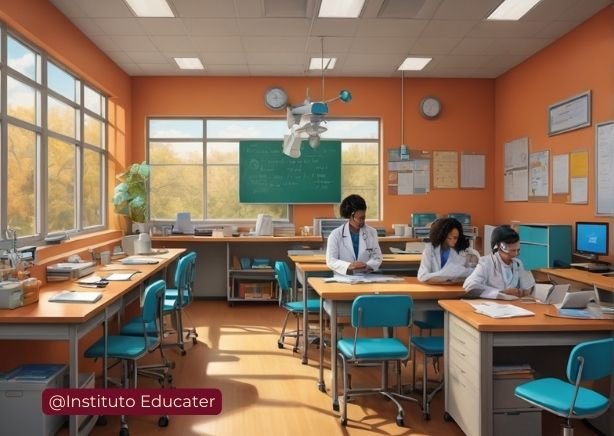
Teaching Telemedicine and Telehealth
The increasing adoption of telemedicine and telehealth in clinical practices in the 21st Century requires an educational approach that incorporates these technologies into the medical curriculum. This section details how telemedicine and telehealth education can be effectively integrated into medical training, preparing students for the nuances and challenges of this emerging modality of patient care.
Including this field in medical education is essential to familiarize students with the tools and practices that will define much of their future professional practice.
Telemedicine Curricular Components:
The implementation of telemedicine teaching faces challenges, such as the need for constant updating in the face of technological innovations and resistance to change in established practices. However, it offers significant opportunities to expand student access to diverse clinical settings and populations that might otherwise be inaccessible due to geographic limitations.
Integrating telemedicine and telehealth education into medical curricula is more than an adaptive necessity; It is a critical evolution that reflects the future of medical practice. Preparing future doctors to operate efficiently in this new paradigm is critical to ensuring that medicine continues to evolve and meet the needs of a diverse global population.
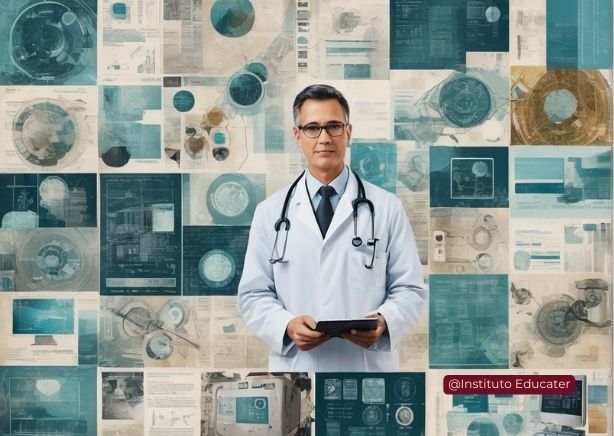
Innovative Assessment Methods
In addition to transforming teaching methods, it is essential to innovate in student assessment. Assessment methods such as mini-CEX (Clinical Evaluation Exercise) or digital portfolios allow for a deeper and continuous analysis of the student's progress. These assessment tools help educators provide more detailed and personalized feedback necessary for developing specific competencies in a clinical setting.
At the forefront of medical education, innovation is not just restricted to teaching methods, but also extends to assessment strategies. Effective assessment is critical to not only measuring students' knowledge and skills, but also providing feedback that guides and refines their learning. Therefore, the implementation of innovative assessment methods is essential for contemporary and effective medical training.
O mini-CEX, or Clinical Assessment Exercise, is a formative assessment method that involves direct observation of students as they perform clinical tasks. This tool allows educators to assess essential competencies such as communication skills, professionalism, and ability to make clinical decisions. More than that, it provides students with immediate feedback, allowing them to adjust their practices in a timely manner.
In addition to mini-CEX, digital portfolios are becoming increasingly prevalent as a holistic assessment tool. They allow students to continually document their achievements and reflections throughout their educational journey. This method not only facilitates self-assessment and personal development, but also helps educators track students’ longitudinal progress.
Another significant advance in medical assessment is the use of practical assessment stations, known as OSCEs (Objective Structured Clinical Examinations). These stations simulate a variety of clinical scenarios, where students must demonstrate their competencies in a controlled context. OSCEs are extremely useful for evaluating the practical application of knowledge in situations that mimic real challenges in the clinical environment.
In addition to more traditional techniques, artificial intelligence is starting to play a role in medical assessment. AI-based systems can automatically analyze student responses in tests and simulations, providing not only quantitative assessments but also qualitative information about students' reasoning and decision-making.
A peer review is another valuable technique that fosters a culture of continuous feedback among students. This method encourages students to constructively critique each other's work, which can increase understanding and retention of clinical knowledge, as well as improve interpersonal skills essential for medical practice.
To ensure the effectiveness of these innovative assessment methods, it is essential that they are coherently integrated into the medical curriculum. This involves adequate training for educators so that they can apply and manage these assessment tools effectively, ensuring that educational objectives are achieved.
The adoption of these innovative assessment methods reflects a commitment to excellence in medical education. They not only improve the accuracy of assessments, but also enrich students' learning experience by more fully preparing them for the demands of modern medical practice.
Moving forward, the next section of our article will discuss interdisciplinary integration in the medical curriculum, a movement that seeks to broaden students' understanding of the complexity and interconnectedness of different areas of healthcare.
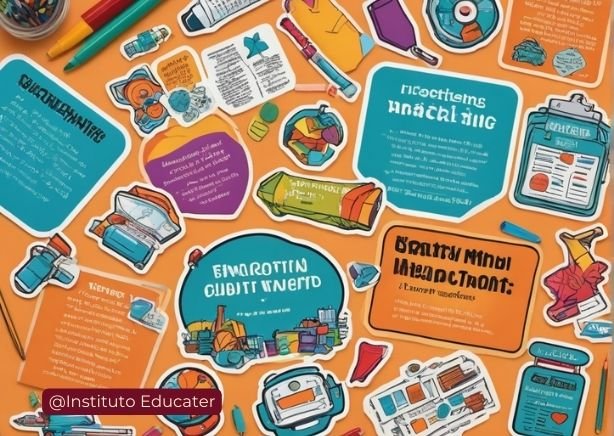
Interdisciplinary Integration
Promoting the integration of different disciplines into the medical curriculum can enrich the educational experience and better prepare students for collaborative practice in healthcare. The inclusion of topics such as medical ethics, public health and technological innovations in the regular curriculum encourages students to think beyond clinical medicine and consider the social and technological impact of their future professional practice.
Interdisciplinary integration in the medical curriculum is a pedagogical approach that recognizes the complexity of contemporary healthcare. By uniting different disciplines, educational programs can offer a more complete and holistic understanding of medicine that goes beyond the traditional boundaries of clinical practice.
Introducing topics such as medical ethics into the curriculum not only reinforces the importance of moral principles in medical practice, but also prepares students to face complex ethical dilemmas that will arise in their careers. This education helps to produce professionals who are not only technically proficient but also sensitive to moral and social issues.
Public health is another area that should be integrated into medical education. Understanding topics such as epidemiology, disease control and public health policies enables future doctors to contribute effectively to the health of populations. This knowledge is necessary, especially in a world facing global health challenges such as pandemics and inequalities in access to healthcare.
Additionally, including technological innovations in the curriculum helps students adapt to rapid changes in the field of medicine. Mastering new technologies, from advanced diagnostic techniques to telehealth tools, is critical for doctors to provide cutting-edge care to their patients.
Collaboration between departments and specialties also enriches teaching. Group projects involving students from different areas of healthcare can promote a collaborative and interprofessional learning environment, essential for modern medical practice, where communication and cooperation between different specialists are essential.
To facilitate this integration, medical education institutions can establish partnerships with faculties in related areas, such as biology, engineering and social sciences. Such partnerships can result in joint programs that provide students with a broader perspective and deeper understanding of the many facets of health.
Assessment of students in an interdisciplinary curriculum must also be adapted to reflect the skills and knowledge acquired in that context. Therefore, the implementation of innovative assessment methods that can measure the effectiveness of interdisciplinary integration is essential.
In summary, interdisciplinary integration transforms the medical curriculum by enriching students' training with a diversity of knowledge and skills that are necessary for contemporary medicine. This prepares future doctors to be more complete professionals adapted to the multidimensional needs of patients.
Moving forward, the next section of this article will explore how effective implementation of assessment strategies may be the key to validating and continually improving interdisciplinary medical education. This deeper examination of assessment methods highlights the importance of aligning educational objectives with innovative teaching practices.
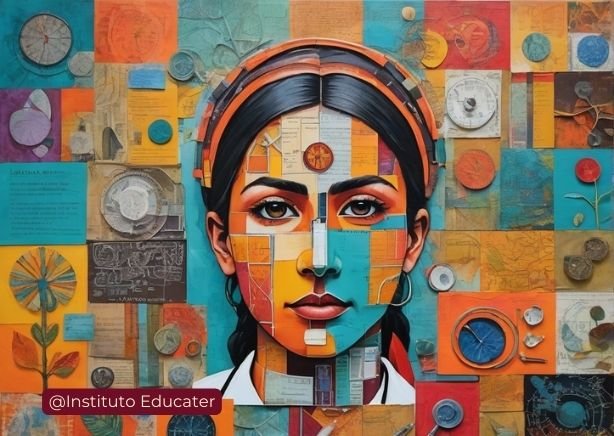
Conclusion
Adopting creative strategies to engage medical students is essential to prepare them for the challenges of contemporary medicine. By transforming the classroom into an innovative and interactive environment, educators can encourage more effective and deeper learning. We encourage educators to experiment with these approaches and reflect on their experiences to continually improve medical education. Transforming medical education not only better prepares future doctors, but also contributes to the evolution of medical practice itself.
Concluding this article on the transformation of medical classrooms leads us to reiterate the importance of adopting creative and innovative strategies in medical education. These strategies are not mere add-ons; are essential to adequately prepare students for the complex challenges of contemporary medicine.
Project-based learning, clinical simulations, and the use of advanced technologies like virtual reality and artificial intelligence are just some of the approaches we discuss. Each of these techniques offers unique opportunities for students to not only absorb knowledge but also apply that information in practical and impactful ways.
Furthermore, we emphasize the importance of innovative assessment methods that accompany these pedagogical practices. Tools like mini-CEX and digital portfolios allow for deeper, more personalized analysis of student progress, ensuring feedback is both constructive and timely.
Interdisciplinary integration also plays a central role, expanding the scope of the medical curriculum to include disciplines such as medical ethics and public health. This approach not only enriches students' academic training, but also prepares them to consider the social and technological impact of their future professional practices.
Collaboration and flexibility are fundamental in this process. We encourage educators to embrace a spirit of experimentation, opening their classrooms to new ideas and technologies and adjusting their methodologies as student needs and responses evolve.
The expected result of these changes is medical education that not only informs, but transforms. By equipping students with practical skills and sharp critical thinking, we are cultivating a new generation of physicians who will be not just caregivers, but innovators and leaders in their fields.
Finally, this transformation of medical education contributes significantly to the evolution of medical practice. By better preparing future doctors, we are also influencing the development of more effective and empathetic medical practices capable of responding to the growing demands of a diverse global population.
We encourage educators and healthcare professionals to reflect on these strategies and experiment with them in their educational practices. We invite everyone to share their experiences and results. How have you transformed your classroom? What challenges and successes have you encountered?
How about sharing this story with your colleagues?
Together, we can inspire positive change in medical education, shaping future healthcare professionals who are more prepared and connected to the needs of the 21st Century.
Share now and be part of this transformation!
Common questions
Medical classrooms are undergoing significant transformations, driven by the advancement of technology and the need for more effective and interactive teaching methods. The introduction of digital tools how e-learning platforms, virtual simulations and augmented reality are reshaping the way future doctors learn, enabling a richer and more engaging educational experience. These innovations facilitate adaptive and personalized teaching, essential to meeting the diverse needs of medical students today.
In addition interdisciplinary integration is becoming common practice in medical classrooms, combining areas such as medical ethics, public health, and medical technology into the regular curriculum. This prepares students to face the complex challenges of contemporary healthcare, emphasizing the importance of a holistic view in medical practice. The application of innovative assessment methods, such as the mini-CEX (Clinical Evaluation Exercise) and digital portfolios, also helps to measure students' progress in a more effective and continuous way.
Collaboration between universities and hospitals is intensifying, providing students with hands-on learning opportunities in real clinical environments. These partnerships are necessary for developing practical skills and understanding the current healthcare environment. For more information on the latest trends and innovations in medical education, visit this link.
To improve the classroom in a medical course, it is essential to integrate advanced technologies It is interactive teaching methods. This includes the use of realistic clinical simulations and e-learning platforms that offer students an immersive, hands-on experience. Such technologies allow students to apply theories in real-world scenarios, significantly improving their ability to retain and understand.
Furthermore, fostering an environment of collaborative learning is important. This can be achieved through group projects and class discussions that encourage interaction between students and between students and teachers. These practices promote critical skills such as communication, teamwork and problem solving, which are essential in medical practice.
To adopt formative assessment strategies Offering continuous feedback to students is also important for developing medical skills. Frequent, constructive assessments help students better understand their areas of strength and areas in need of improvement, contributing to more effective and personalized learning.
For more tips on how to innovate in medical education and practical examples of success, visit this link to explore the latest trends and resources available.
Stimulating the interest of medical students can be achieved through the incorporation of active teaching methodologies and technology in the classroom. Using clinical simulations and virtual reality not only makes learning more interactive, but also allows students to experience hands-on scenarios that enhance their decision-making and clinical skills in a controlled and safe environment.
Another effective strategy is the integration of interdisciplinary projects that connect medical knowledge with other areas, such as ethics and health management. These projects stimulate curiosity and show the practical applicability of medical knowledge in different contexts, increasing student engagement and enthusiasm.
Furthermore, provide opportunities for Research and Development allows students to pursue their specific interests within the medical field, which can significantly increase motivation and commitment to a medical career. Encouraging participation in conferences and publications can also enrich your educational experience.
For more ideas on how to engage medical students and to see practical examples of success, visit this link to explore additional resources and updated case studies.
To motivate medical students to study more effectively, it is essential to implement teaching methods that connect theory to clinical practice in engaging ways. Introducing interactive simulations and real-life case studies can help students visualize the direct impact of their learning on patients' lives, thereby increasing their motivation and engagement.
Incorporating gamification elements into the curriculum, such as interactive quizzes and competitions based on medical knowledge, can also be extremely motivating. These activities promote fun and challenging learning, encouraging healthy competition and collaboration among students.
Additionally, offering continuous and constructive feedback is key to keeping students motivated. Knowing they are making progress and where they need to improve can help students feel more confident and focused on their studies.
For more strategies on how to increase medical student motivation, check out this link to access additional resources and up-to-date practical tips.
Developing motivation in the classroom can be achieved by implementing teaching methods that directly engage students in their learning process. Using techniques such as project-based learning (PjBL), which places students at the center of the educational activity, allows them to see the practical and applied value of what they are learning, significantly increasing their interest and motivation.
Another effective strategy is personalizing educational content to meet students' individual interests and goals. This can be done through the use of adaptive technology that adjusts learning material based on student responses, providing a more personalized and relevant experience for each student.
Additionally, creating an inclusive and supportive classroom environment where students feel safe expressing their opinions and exploring new ideas can promote greater motivation. Encouraging interaction and dialogue among students and between students and teachers can strengthen commitment to learning.
To find out more about how to cultivate motivation in the classroom and gain access to additional resources and strategies, visit this link.
To promote a significant improvement in medical education, it is essential to incorporate innovative teaching methods that encourage student interaction and engagement. Techniques such as advanced clinical simulations and the use of augmented reality in practical classes can transform learning, making it more dynamic and effective by simulating real medical care scenarios.
Furthermore, adopting an interdisciplinary approach to the curriculum can enrich medical training. Integrating knowledge from areas such as bioethics, health sociology and medical technology helps prepare students for the multifaceted challenges of modern medicine, promoting a more holistic and comprehensive view of health.
Strengthening ongoing formative assessment, which provides regular and constructive feedback, is essential for the ongoing development of students' clinical and academic skills. This practice allows for timely adjustments in the learning process, ensuring that all students achieve the established educational objectives.
For more information about effective methods for improving medical education and practical examples of successful implementation, visit this link.
To make classes more interesting for medical students, it is necessary to integrate teaching methods that are interactive and applied. Implementing technologies such as virtual reality and interactive clinical simulations can revolutionize learning, allowing students to experience practical scenarios that simulate real medical challenges. These tools provide a more engaging learning experience.
Another effective approach is to use problem-based learning (PBL) methods, which encourage students to develop critical thinking and problem-solving skills through real-life cases. This method promotes greater interaction and group discussion, making classes more dynamic and interesting.
Additionally, promoting student participation in research and extension projects that relate theory to clinical practice can significantly increase student interest and motivation. These activities allow students to explore new areas of medicine and contribute to the scientific community during their undergraduate studies.
To explore more strategies on how to make medical classes more interesting, visit this link for additional resources and case studies.
Within a medical course, several pedagogical interventions can be created to enrich learning and deepen students' understanding. Methods like Problem-Based Learning (PBL), which encourages students to solve complex clinical cases collaboratively, are fundamental to developing critical diagnostic and treatment skills.
In addition to PBL, clinical simulations represent an important pedagogical intervention. They allow students to practice medical procedures in a controlled environment, using cutting-edge technology to simulate real medical conditions. This approach helps build students' confidence before they come into direct contact with patients.
It is also possible to integrate interactive technologies, such as virtual reality (VR) and augmented reality (AR), to provide immersive learning experiences. These technologies can be used to explore detailed human anatomy or to simulate surgical procedures, providing a deeper and more practical understanding of medicine.
For more information on how to implement these pedagogical interventions in a medical course and examples of success, visit this link.
To make medical school more attractive, it is essential to innovate in the pedagogical approach and teaching tools. Incorporate emerging technologies how virtual reality (VR) and augmented reality (AR) can transform medical education, making it more interactive and immersive. These technologies allow students to explore anatomical complexities and surgical procedures in a visually engaging and detailed manner.
To adopt project-based teaching methods that integrate real-world situations can also significantly increase student interest. These activities encourage the practical application of knowledge and develop essential skills such as teamwork and critical thinking, essential for medical practice.
Furthermore, create opportunities for interdisciplinary research and collaboration with other colleges and institutions can enrich the educational experience. Encouraging students to participate in research projects and publications increases their exposure to healthcare innovations and fosters a culture of continuous learning and scientific curiosity.
To explore more about how to make medical education more attractive and examples of effective strategies, visit this link.
To hold a different and more engaging class in medicine, it is recommended to integrate advanced clinical simulations and interactive technology. These resources provide students with the opportunity to practice skills in a controlled but realistic environment, which increases understanding and knowledge retention.
Incorporate discussions based on real cases It can also make classes more dynamic. By analyzing authentic clinical scenarios, students can develop critical diagnostic and decision-making skills, theoretically applying knowledge to practical situations.
Furthermore, using methods of interactive teaching, such as immediate response technology (clickers) for questions during class, can increase student participation and make learning more interactive and fun. These techniques encourage students to become actively involved during classes, improving the educational experience as a whole.
For more strategies on how to innovate in medical classes and see practical examples, visit this link.
A teacher can make classes more interactive by integrating engagement technologies, such as student response systems (clickers) and collaborative learning platforms. These tools allow students to actively participate during classes, answering quizzes and debates in real time, which can significantly increase interaction and interest in the subject.
Add elements of gamification is another effective strategy. Implementing educational games or knowledge-based competitions can motivate students through a playful and competitive learning environment, encouraging active learning and group participation.
Furthermore, promote practical activities, such as group work and research projects during classes, can also facilitate greater interaction between students. Such activities encourage discussion and exchange of ideas, essential for deeper and more engaged learning.
For more tips on creating interactive lessons and practical application examples, visit this link.
The first step to making school a more attractive and enjoyable place is to create a pleasant and welcoming environment. This can be done through decorating and organizing the space, including installing plants, pictures and other decorative elements.
Furthermore, it is essential to create opportunities for students to get involved in extracurricular activities and projects that motivate them and make them feel part of the school community. This may include creating clubs, workshops and events that meet students' needs and interests.
Another strategy is to promote participation and collaboration among students, teachers and parents. This can be done through the creation of a parents' committee, regular meetings and effective communication actions.
Promoting interaction in the classroom is essential for effective learning and can be achieved through the implementation of active learning methodologies. Methods such as Problem-Based Learning (PBL) encourage students to work in teams to solve complex problems, which naturally encourages discussion and the exchange of ideas among students.
Incorporating technology into education is also an excellent way to increase interaction. Tools such as real-time voting apps, online discussion forums and collaborative platforms can engage students and encourage them to participate more actively in classes.
Additionally, structuring classes to include brainstorming sessions, debates, and group presentations can foster a more dynamic and interactive environment. These activities encourage students to express their opinions and learn from their peers' perspectives.
Creating a welcoming environment at medical school is critical to student well-being and success. An effective strategy is to promote a culture of support and mutual respect by encouraging open communication between students, faculty and staff. This can be facilitated through mentoring programs, where more experienced students help younger ones, creating a robust support network.
Additionally, it is important to offer mental health resources and relaxation spaces on campus. Comfortable areas for studying and resting, along with access to counseling services, can help alleviate stress and promote academic-life balance.
Introducing extracurricular activities that promote social interactions and development of non-academic skills also contributes to a more welcoming school environment. This includes clubs, sports, and social events that allow students to relax and connect with their peers in a less formal context.
To capture student attention in the classroom, it is essential to use interactive and engaging teaching methods. An effective technique is to gamification, which incorporates game elements into learning, such as competitions or reward systems. This not only makes classes more fun, but also encourages more active participation from students.
The use of multimedia technology, such as interactive presentations, videos, and augmented reality, can capture and maintain students' attention. These visually stimulating resources help explain complex concepts more clearly and are especially effective in subjects that require great visual detail, such as anatomy or biochemistry.
Furthermore, applying methods of discussion-based teaching, such as classroom debates and round tables, encourages students to actively engage with the study material. These discussion sessions allow students to express their opinions and learn from each other, promoting a more dynamic and interactive learning environment.
Engaging students in the classroom requires adopting teaching methods that encourage active participation and critical thinking. An effective approach is to use active learning techniques, such as group discussions and practical projects that relate theoretical content to real-life situations. These activities promote collaboration and the practical application of knowledge, keeping students engaged and interested.
Technology integration is also key to capturing the attention of modern learners. Tools such as tablets, educational apps and e-learning platforms can transform traditional classes into interactive and engaging experiences. Using multimedia and virtual reality to simulate clinical scenarios or biological processes can make learning more dynamic and memorable.
Additionally, fostering an inclusive and supportive classroom environment where all students feel valued and able to contribute is crucial to engagement. Strategies that encourage the expression of different points of view and value diversity of thought help create a more cohesive and active learning community.
Encouraging the participation of medical students can be achieved through teaching techniques that promote interaction and direct engagement. Implement the Problem-Based Learning (PBL) is an effective strategy as it places students at the center of the learning process, encouraging them to solve real medical problems in a collaborative context.
The use of interactive technology, such as medical simulations and virtual reality platforms, can also significantly increase student participation. These tools allow students to practice procedures and make clinical decisions in a safe environment, which not only improves their skills but also keeps their interest and motivation high.
Include feedback and reflection sessions Regularly helps keep students engaged and aware of their progress. Establishing an ongoing dialogue about performance and learning strategies can motivate students to participate more actively and seek constant improvements in their skills and knowledge.
To motivate medical students, teachers can adopt teaching methods that make direct connections between the material studied and its application in clinical practice. Strategies like Problem-Based Learning (PBL) encourage students to develop solutions for real clinical cases, thus increasing interest and perception of the relevance of the study.
Furthermore, integrate advanced technologies such as medical simulations and virtual reality can make classes more dynamic and interactive. These tools simulate challenging clinical scenarios, allowing students to experience decision-making in a controlled environment, which can significantly increase their engagement and motivation.
It is also essential that the teacher establishes a welcoming classroom environment and open support for dialogue. Promoting regular discussions about the challenges students face and offering constant feedback can help keep students motivated and committed to the course.
Your message is important to us
Important
This is an open invitation to educators, students and healthcare professionals to engage in this educational transformation. Your participation, whether sharing experiences, ideas or challenges, is crucial to shaping the future of medical education. We are at an inflection point: together, we can lead the change toward medical education that truly meets society's needs. Are you ready to be part of this evolution?
